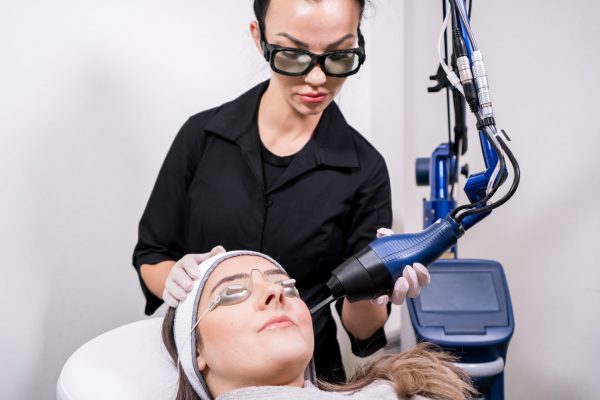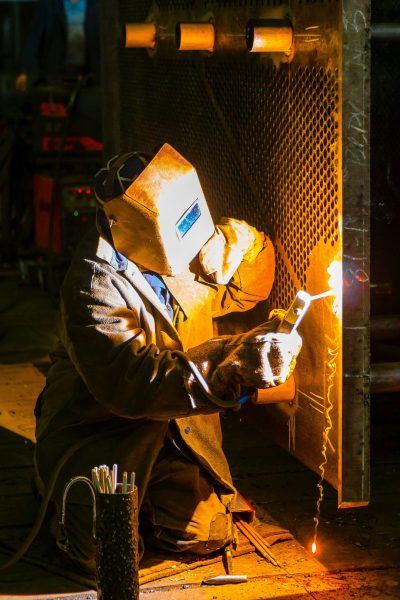

The Unrivaled Power and Diversity of Carbon Dioxide Lasers
In 1964, carbon dioxide lasers were developed as one of the earliest gas lasers, powerful enough to cut through steel and titanium, and gentle enough to resurface skin and carve cloth and paper. This versatile laser works with great precision, functions at a comparably lower cost, and has unmatched power levels that cover a range of industries from medicine to manufacturing. Now, 56 years later, they remain one of the most impressive lasers on the market.
Structure and Output
Despite its name, CO2 lasers require a gas mixture of around 80% helium, 15% nitrogen, and only 5% carbon dioxide. These lasers combine both high-pressure compressed gases and electricity to produce light. The laser instrument consists of a tube with mirrors at the end for the beam to reflect. Nitrogen is an important component, as its molecules become “excited” once hit with an electric current. When nitrogen molecules become excited, they discharge energy by producing photons. In combination with cooled helium atoms, nitrogen can emit light, which then bounces between the tube’s reflective mirrors. On the light spectrum, the light produced is infrared and relatively safe to the eye, though safety glasses or helmets are always recommended, whether you’re a welder or a doctor.
Medical Applications
CO2 lasers have catered to many sectors of the medical industry since the 70s, including oncology, dermatology, plastic surgery, and dentistry. CO2 lasers, with their precision and ability to offer surgeons optimal control over the instrument, are often used in oncology to shrink, kill, and cut out tumors and perform biopsies. With bendable beams, the surgical instruments can reach difficult places without harming surrounding tissue. Dentists may opt to use CO2 lasers for this very reason. They can cut away gum tissue in cases of gum disease and cosmetic enhancement. The meticulousness is essential.
For dermatology usage, short pulses of light distribute beams through scanning a pattern to resurface skin by removing thin layers. This technique results in minimal heat damage to the skin, and is performed to reduce wrinkles, to even out skin tone, minimize age spots, and improve firmness. CO2 laser treatment is also a tactic to reduce discoloration and smoothen out lifted scar tissue. The scar tissue is able to flatten and return to a more natural pigmentation.
At max capacity, CO2 lasers will run over 1,000 watts, though this wattage is rarely necessary. Medical applications remain on the lower end of the spectrum while metalwork shows off its unrivaled power levels. Sciencing.com explains that for steel cutting and machining, between 25 and 100 watts are the standard while the wattage of laser pointers run on only a few thousandths of a watt.

Welding and Other Applications
These gas lasers do not only shine in the medical industry. There are many industrial, manufacturing, and welding applications for lasers. Steel cutting applications such as building anti-missile weapons and shaping metals to construct ships are an example of the laser’s incomparable power. With the support of an assist gas, CO2 lasers can cut, perforate, and mark metals with little effort. Assist gases such as oxygen or additional nitrogen increase laser heat and the speed needed to cut nickel, stainless steel, and aluminum, or argon to cut titanium. Helium and argon may also be used as a shielding gas in such applications.
CO2 lasers are commonly used to cut and process glass, ceramics, plastics, and wood, but require less heat and velocity than metalworking. When it comes to these types of projects, think of house flipping – mirrors, marble countertops, cabinets, wood floors, stone around the fireplace, etc. – CO2 lasers can do it all with even cuts. The functionality of CO2 lasers’ endless list of applications is made possible with high purity mixed gases, which requires a reliable gas supplier who can provide certification and peace of mind.

Mixed Gases from Rocky Mountain Air Solutions
Rocky Mountain Air Solutions is a provider of high purity CO2 laser gases, shield and assist gases (carbon dioxide, nitrogen, helium, oxygen, and argon) to the Rocky Mountain region, spanning across five states (Colorado, Utah, Wyoming, Idaho, and Nebraska). Whether you decide to use a single cylinder of mixed gases, or three separate cylinders, Rocky Mountain can guarantee that the high-pressure gases needed for CO2 laser applications are free of impurities that could sabotage your work.
If you have any questions regarding our partnership with PurityPlus, how we go about supplying gases with high purity certification, or would like to partner with us as your gas provider, contact your local branch today. We look forward to serving you!



